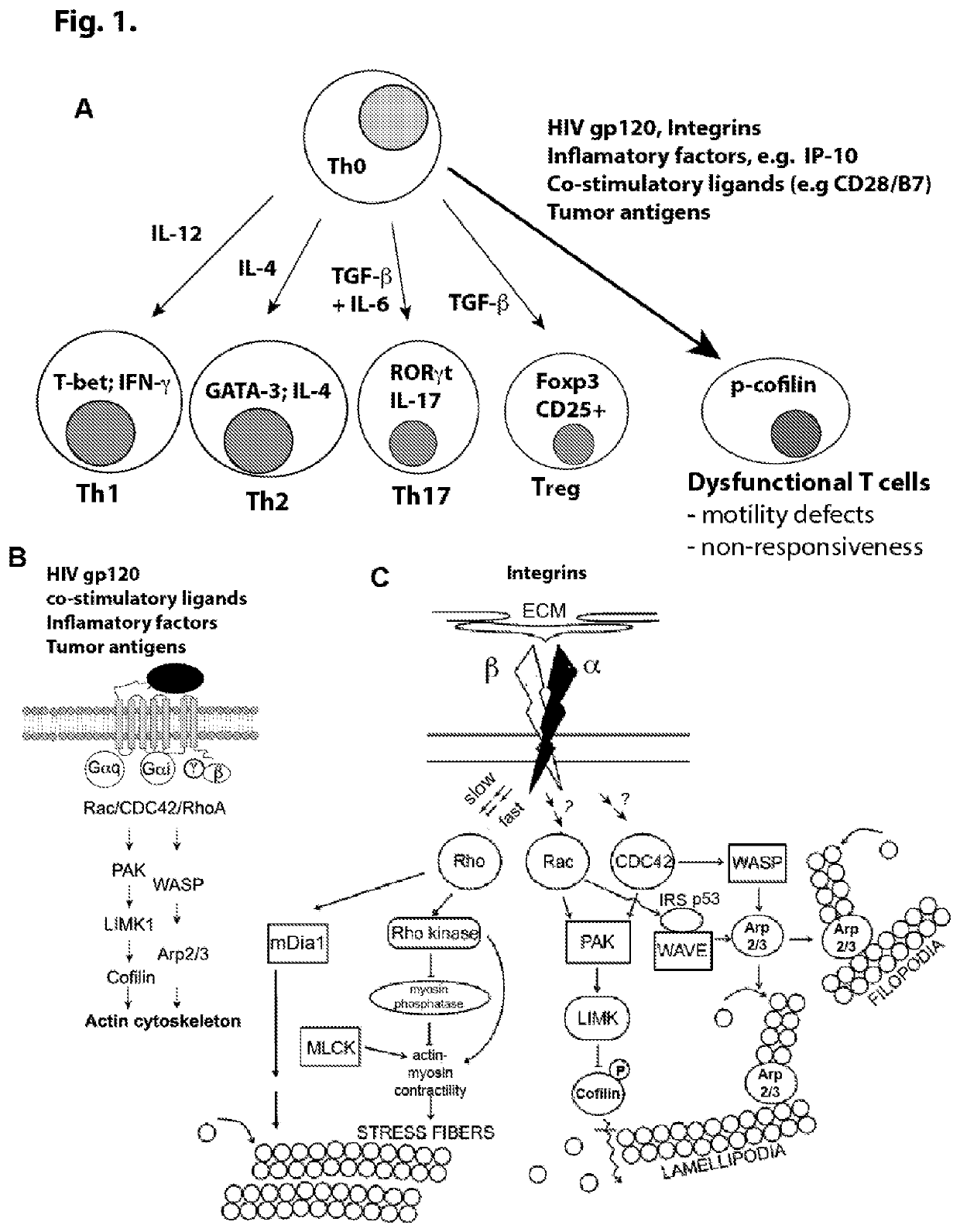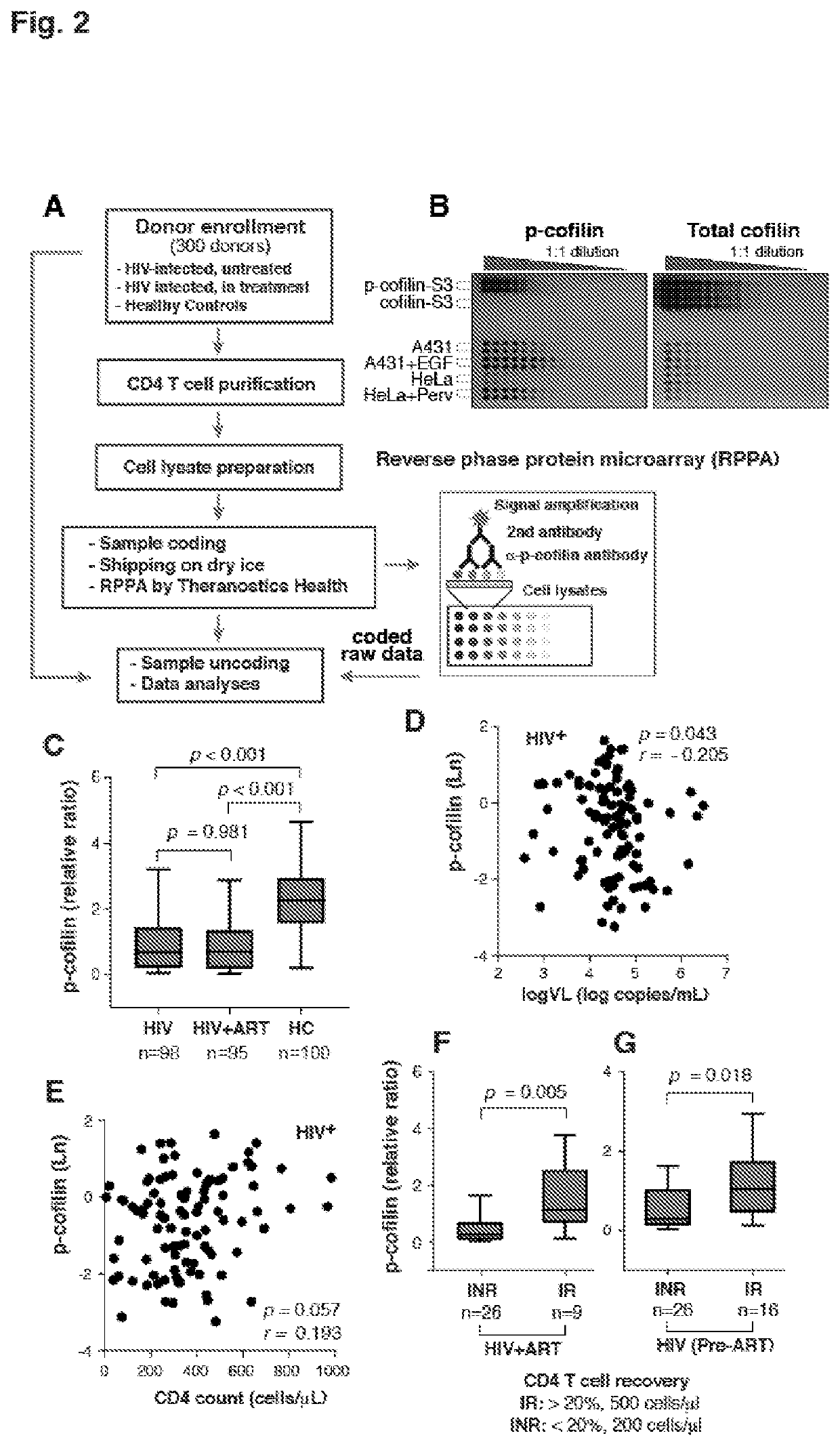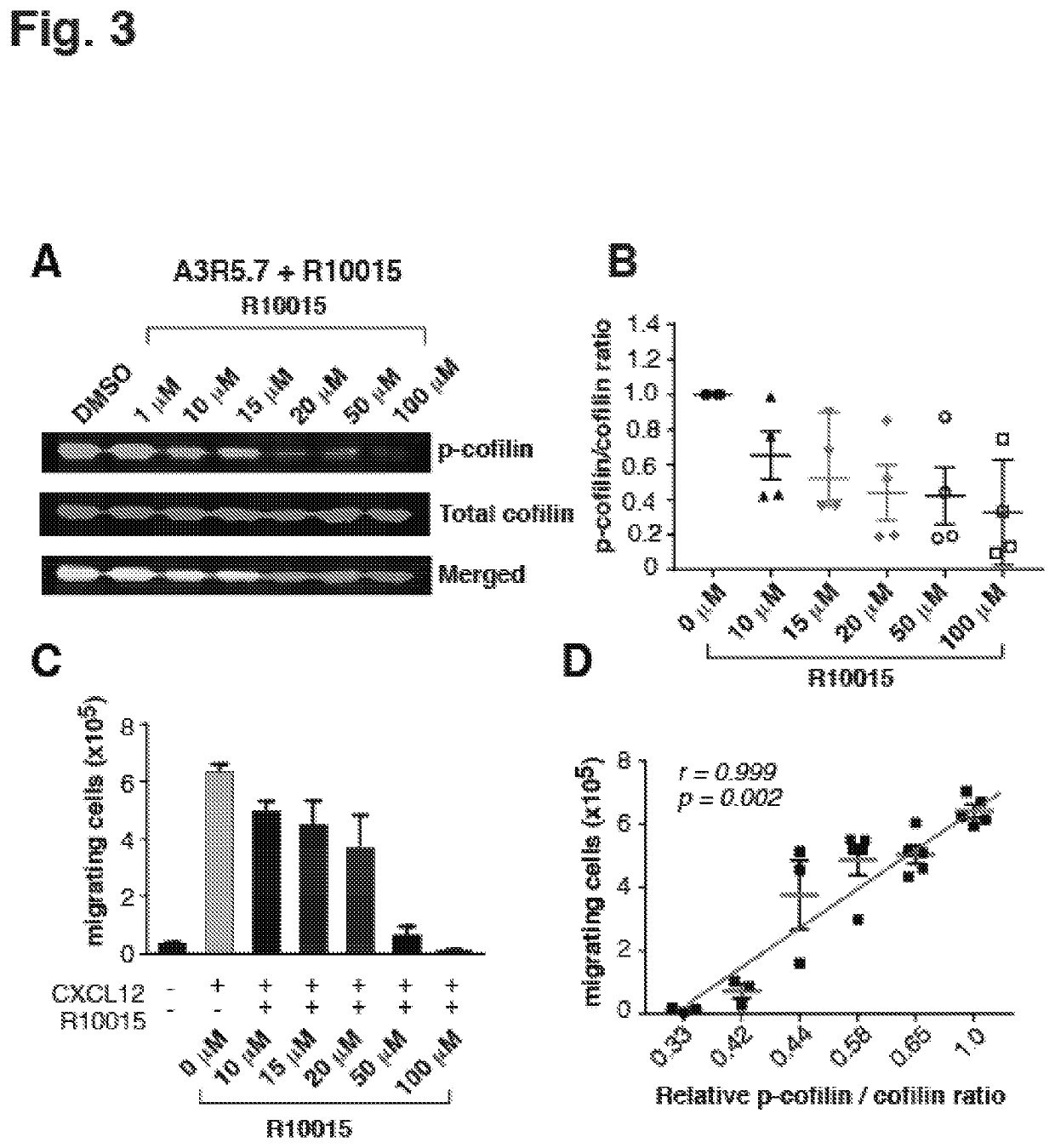Cofilin phosphorylation for quantifying cd4 t cell damage and predict cd4 t cell recovery from Anti-retroviral therapy
- Summary
- Abstract
- Description
- Claims
- Application Information
AI Technical Summary
Benefits of technology
Problems solved by technology
Method used
Image
Examples
example 1
Study
[0051]200 HIV-1 infected patients were enrolled. Among the HIV-infected patients, 98 had no previous or current ART at the time of the p-cofilin profiling, and 102 had ongoing ART for over a year, but 4 of the ART-treated patients had a viral load greater than 1,000 copies / ml and were excluded from the study for possible drug resistance. The CD4 T cell count and viral load of these subjects were measured every 3 months. One hundred age- and sex-matched healthy controls (HC) were enrolled. A summary of the subjects is listed in Table 1 and Table 2. Of the ART-naïve patients, 65 eventually received ART at around 6 months after the p-cofilin profiling, and were treated for more than a year. All of these patients receiving ART reached undetectable plasma HIV-1 RNA. ART-treated patients were further evaluated and categorized into immune responders (IR) and immune non-responders (INR). Both IR and INR were treated with ART for over one year. IRs were those who had a CD4 T cell recove...
PUM
 Login to View More
Login to View More Abstract
Description
Claims
Application Information
 Login to View More
Login to View More - R&D
- Intellectual Property
- Life Sciences
- Materials
- Tech Scout
- Unparalleled Data Quality
- Higher Quality Content
- 60% Fewer Hallucinations
Browse by: Latest US Patents, China's latest patents, Technical Efficacy Thesaurus, Application Domain, Technology Topic, Popular Technical Reports.
© 2025 PatSnap. All rights reserved.Legal|Privacy policy|Modern Slavery Act Transparency Statement|Sitemap|About US| Contact US: help@patsnap.com



